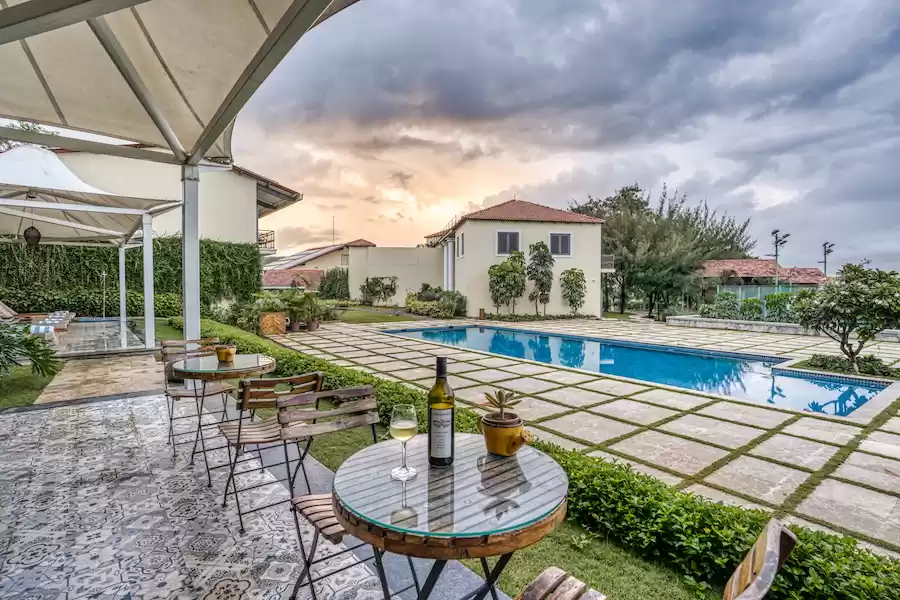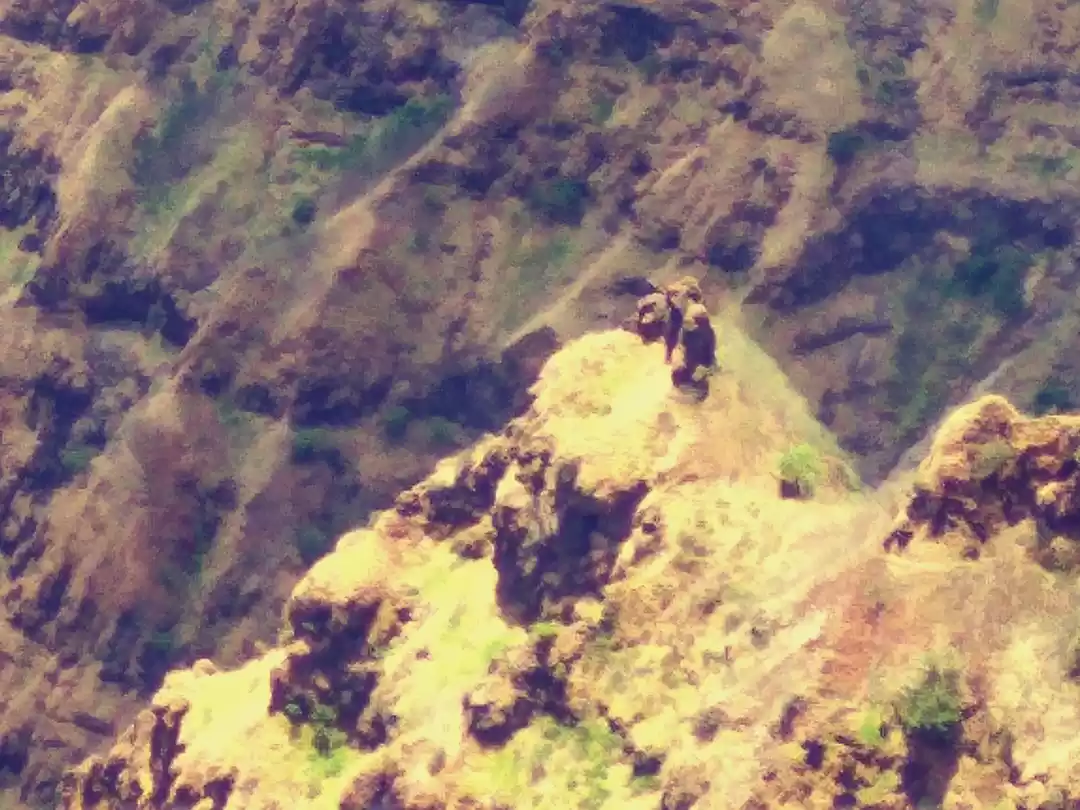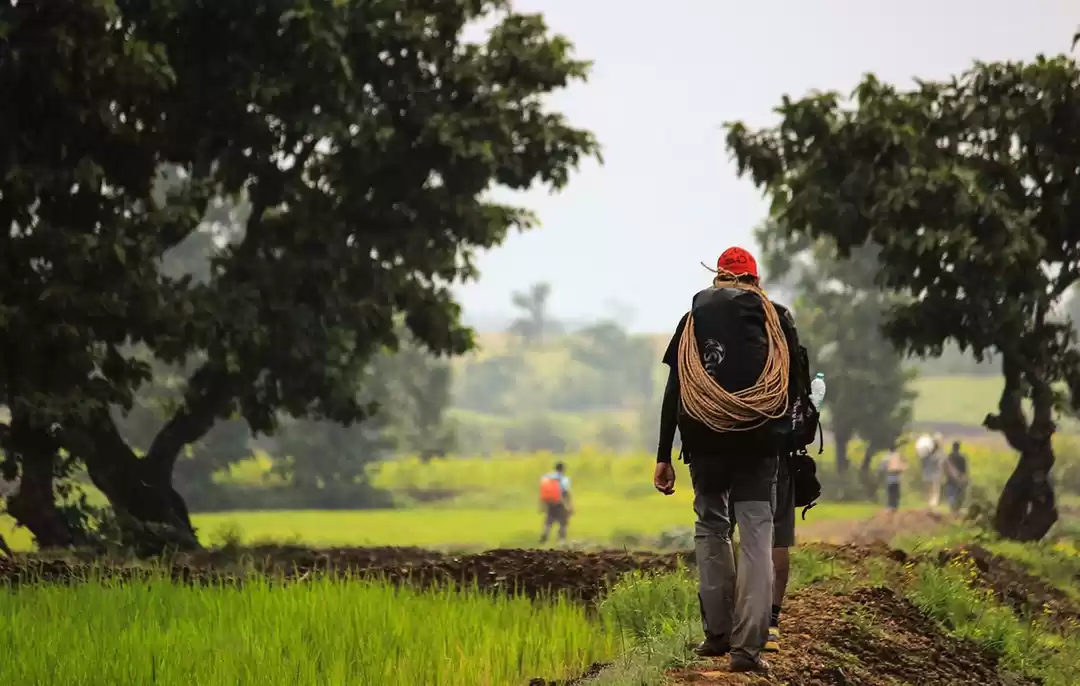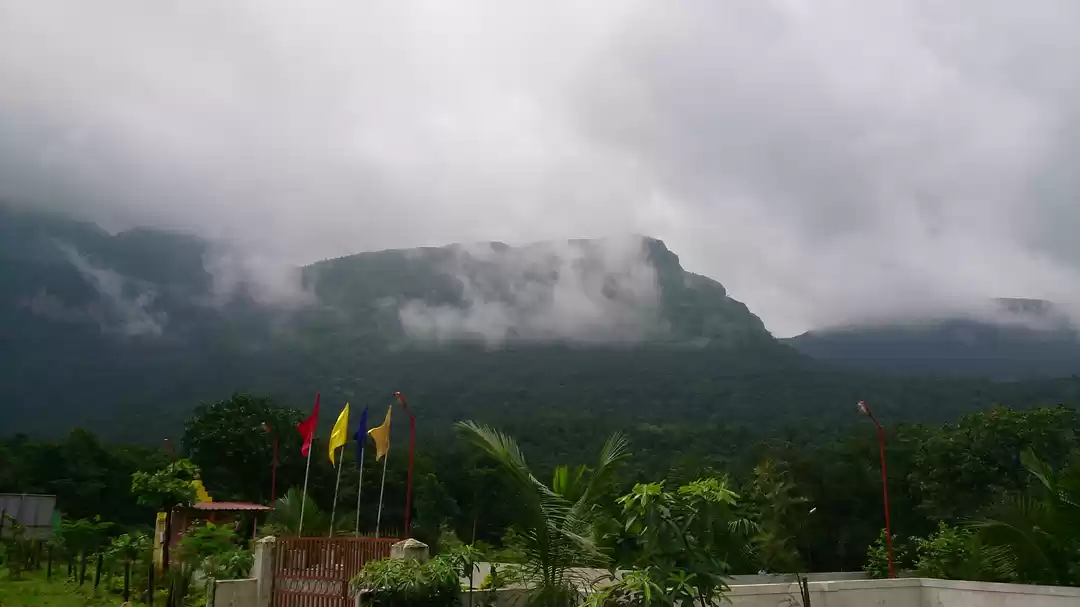
Name: Naneghat & Nanacha Angtha
Height: 2461 feet/750 metres above sea level
Trek Category: Easy-Medium trek
Equipment required: None but wear appropriate trekking shoes for this trek
Base Village(s): Vaishakhare for the trek. The pass is also accessible from Ghatghar via a road
Distance from Pune: 120 kms from Pune
Distance from Kalyan to Vaishakhare: 60 kms
Time to trek uphill: 2-3 hours approximately
Where to stay: Staying overnight is possible in the cave near the pass
Where to eat: Carry your own food & water. Can request food (pithala-bhaakri, pohe etc.) from the dhaba on the plateau above the pass
Best time to visit: During monsoons and in winter months
What is Naneghat?
Naneghat (Nane = coins; Ghat = Mountain Pass) is a scenic mountain pass situated in the Western ghats, that connects the Konkan region to the Deccan plateau via Junnar. Here nanis were collected as toll in a carved stone vessel, somewhere around 200 BCE to 190 CE, to gain entry into the Satvahana kingdom - The first record of any ancient toll booth anywhere in the world!
The stone vessel still stands intact today at the mouth of the ghat overlooking a small hamlet on the plateau. There is a man-made cave as well on the other side of the pass with Bramhi inscriptions in there. Dotted with numerous other smaller caves and water tanks, the pass was not only a gateway to the other side but also offered refuge to the weary travellers who crossed over from Konkan to Pratishthan (ancient name for Junnar)
Nanacha Angtha (Angtha=Thumb) is the apt name of the pinnacle seen next to the ghat. As vertical and steep it looks from below, it is quite a manageable stretch uphill from Naneghat. It takes only about 10 minutes to climb to the top of the pinnacle from the pass.
The top of the pinnacle is so windy that it is difficult to stand there lest you tumble down in the valley below. Many visitors give it a miss but do trek up to there to complete the experience and get ready to be blown away (both literally and figuratively!).
Who built it?
As per the inscriptions in the cave, it is believed that Queen Naganika from the Satvahana Dynasty commissioned the excavation of the pass and the building of the cave after the death of her husband, King Satakarni. The inscriptions talk about the lives of the royal couple and their son who succeeded the throne.
The inscriptions also throw light on a lot of practises which highlight the history of the period like the sacrifices and various rituals performed by the kings of the period. The mention of Vedic Gods in sync with Hindu Gods like Vasudeva and Balram indicate the transition to the practice of Vaishnava Hinduism in the Satvahana dynasty. The numeric inscriptions in there are also the world's oldest known numeric symbols known to man.
How to Reach Naneghat from Mumbai/Kalyan (Popular Trek Route)
Mumbai--> Kalyan-->Murbad--> Tokawade--> Vaishakhare (base village)-->Naneghat Trek Starting Point
After reaching Kalyan, one can take the ST buses plying towards Ahmednagar/Alephata/Junnar going via Malshej Ghat.The Naneghat stop is around 5 kms from Tokawade village and is not an official stop. So you will have to request the conductor to stop the bus there on the road. The trekking path starts behind a board put up on the road there.
If you are coming by your own vehicle, then you can park the vehicle near this starting point of the trek. There is some parking space available on the other side of the road.
How to Reach Naneghat from Pune
1) Pune--> Alephata ( by ST Bus ) --> Catch another bus towards Kalyan via Malshej Ghat and get down at the Naneghat Trek Starting Point
2) Pune--> Junnar-->Ghatgar-->Road to Naneghat. (ST buses ply between Pune <--> Junnar, Junnar<--> Ghatgar). This is not a trekking route but a proper paved road which takes one to the top of the plateau.
There are benches along the edge of the plateau for the tourists to sit and soak in the stunning views. A small dhaba serves food and drinks on the plateau. An ideal getaway for a day's picnic from Pune.
The Trek
The trek starts off on a little muddy flat path straight through the forest right off the road. It seems really easy at first being a flat walk with trees on both sides but soon after some 45 minutes or so (depending on one's speed of course!) the path starts ascending rapidly. The almost flat mud path soon gives way to ancient steps which were hewn from the steep inclines of the mountain.
The stony steps are obviously in a disarray now and time has taken a toll on this path (a play on words intended), which was once extensively used by traders.
It took us 2 hours to reach the pass from the starting point. The trek is easy but is a continuous ascent. Find your own pace and enjoy the climb taking in the views of the Western ghats. An intermittent cool breeze would blow on our face from time to time and would take away all our weariness. It was a delightful climb to the pass with the steps leading us through a thick forest abuzz with (hidden but audible) activity.
There are a couple of water tanks along the steps as we reach near the top of the pass. The genius of these tanks is that they are carved right under the mountain inclines which helps it to collect all the fresh rain water that trickle down in these tanks. These tanks made sure that the weary travellers of yore could quench their thirst on their way to the high mountain pass. Even today the water in these tanks are so refreshingly cool and clear.
The Cave
The cave was soon in sight. Protected by railings, it looks like a grand modern-day balcony carved out from the mountain. The cave inside is quite large with Bramhi inscriptions on its walls. Naneghat comes under the Archaelogical Survey of India (ASI) and a caretaker from the nearby village (on the plateau) is appointed to clean and maintain the place.
Naneghat
The small rocky mountain pass is soon in sight. It is a narrow stony path between two vertical rocky walls leads us from the cave to the stone vessel and out in the plateau. The pass is naturally very windy as it the sole passage for the air to rush out from the vast plateau above it.
This trek is very popular during monsoons as the rains lend a totally different aura to the entire landscape here. Rain water rushes down from the pass cascading onto the steps below like a small waterfall. Beyond the pass, the plateau is a carpet of green grass and flowers. The mist and fog all around in the ghats lend it a divine look.
Naneghat is also quite popular for its reverse waterfall. This reverse waterfall is a spectacle to watch with the Jivdhan fort in the background. During monsoons, such is the gust of the wind here in the mountains that the water is literally pushed back on the plateau defying gravity.
Food & Toilet Options
Food & toilet facility is available on top of the plateau after completing the trek. The ASI caretaker's family runs a small dhaba which dishes out the local favourites like pithala bhaakri, pohe, bhajiyas, etc as per the tourist request.



























